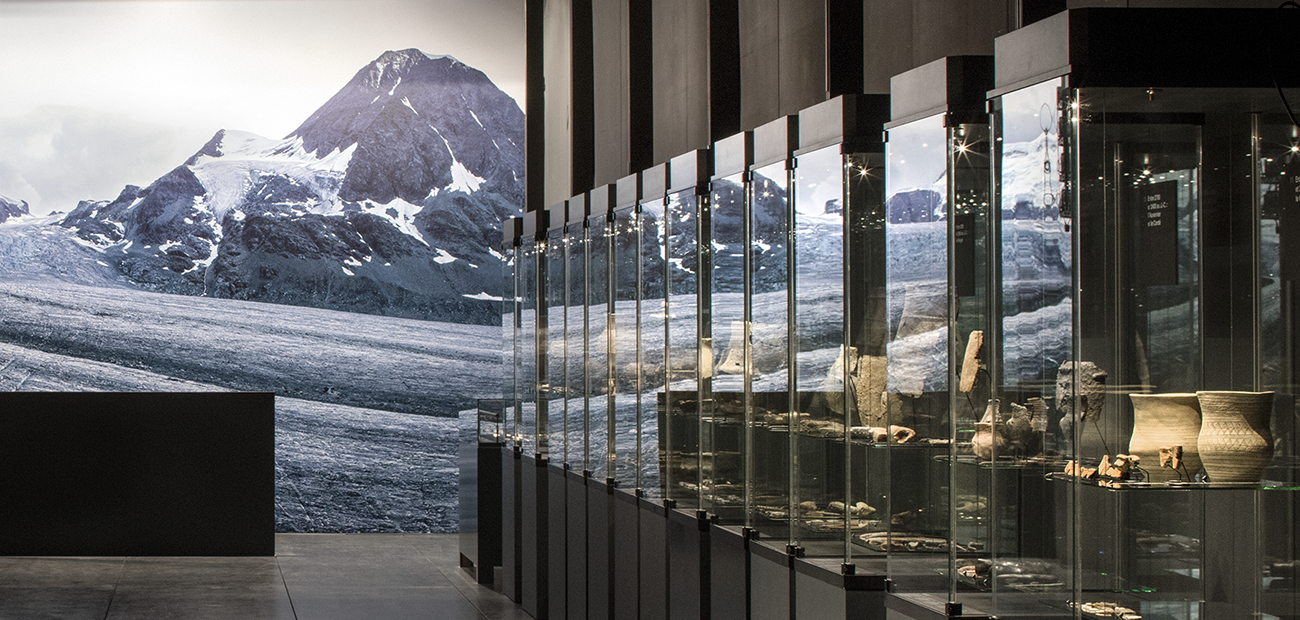Prehistory
From the Glacial Retreat to the Bronze Age (Frédéric Troyon room)
What is Prehistory ?
Let us hear from Frédéric Troyon (1815-1866), the "inventor" of Vaud prehistory and the first Curator of the Museum: "What our country lacked before the Christian era was not inhabitants but historians. However, this absence of written documents is not irreparable. There is another type of documents, which are no less positive than parchments, consisting in the debris of industry that is found buried in the earth."

1. Model (detail) of the Rock Shelter at Mollendruz (Mont-la-Ville). Mesolithic, circa 9,000 B.C.
Palaeolithic and Mesolithic (13,500 - 5,500 B.C.)
At the end of the Palaeolithic era, and above all during the Mesolithic era, small groups of hunter-gatherers criss-crossed the territory during the seasons. The traces of their camps, in rock shelters or in the open air, reveal their movements on the plains and in medium mountains (Alps and Jura).

2. Flint Arrowheads. Mollendruz (Mont-la-Ville). Mesolithic, circa 7,000 B.C. Length: approx. 2 cm.
These nomadic populations used a wide range of resources, in an environment that mostly consisted of forest. The relics that have been found on archaeological sites are modest: flint and bone weapons and tools, relics of bones of hunted and eaten animals, relics of households, etc.
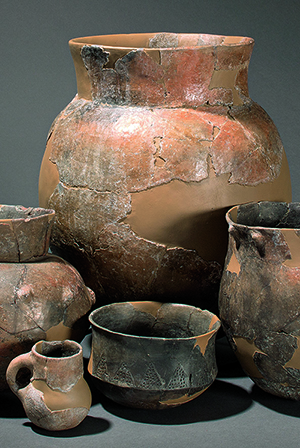
3. Ceramic. Vallon-des-Vaux (Chavannes-le-Chêne). Neolithic, between 4,300 and 3,700 B.C.
Neolithic (5,500 - 2,200 B.C.)
The way of life changed radically in the Neolithic era with the adoption of agriculture and cattle breeding, involving the settlement of populations, together with land clearing for growing food and creating pastures. The quantity of material evidence is much greater, especially with the appearance of pottery and polished stone tools.
The first lakeside villages were set up on the banks of the Neuchâtel and Morat lakes and on Lake Geneva.
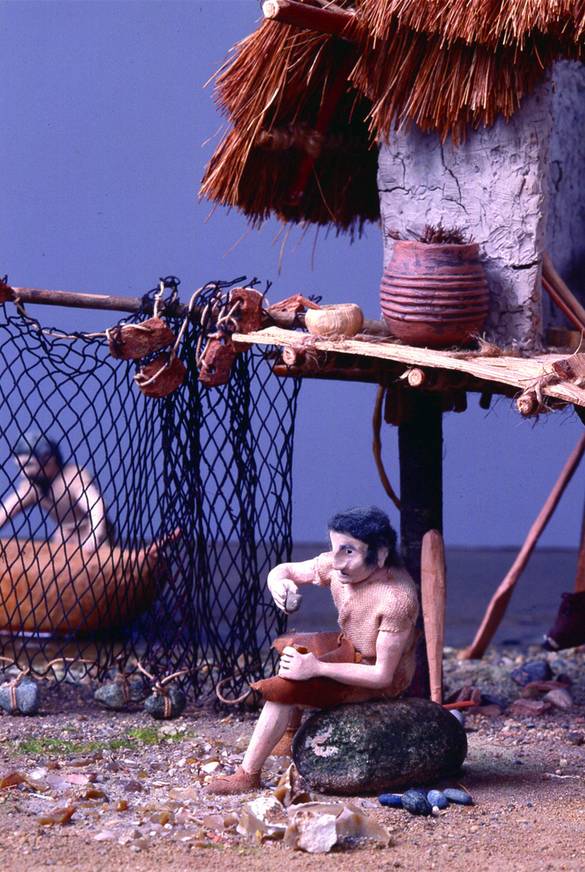
4. Model of a Neolithic House (detail). Yverdon-les-Bains, circa 2,800 B.C.
At the lakeside sites, the humid environment has preserved a quantity of fragile objects and objects made of perishable materials, which have disappeared elsewhere: intact ceramics, baskets, wooden objects and fabrics. The plans of houses and the organization of villages in these special archaeological contexts are well known.
Several large cemeteries from that period have been excavated, especially in the Lake Geneva region. They tell us about Neolithic burial practices. Other expressions of a cult or religious nature have left traces, in the form of menhirs, both isolated and joined together in alignments, and engraved stelae.
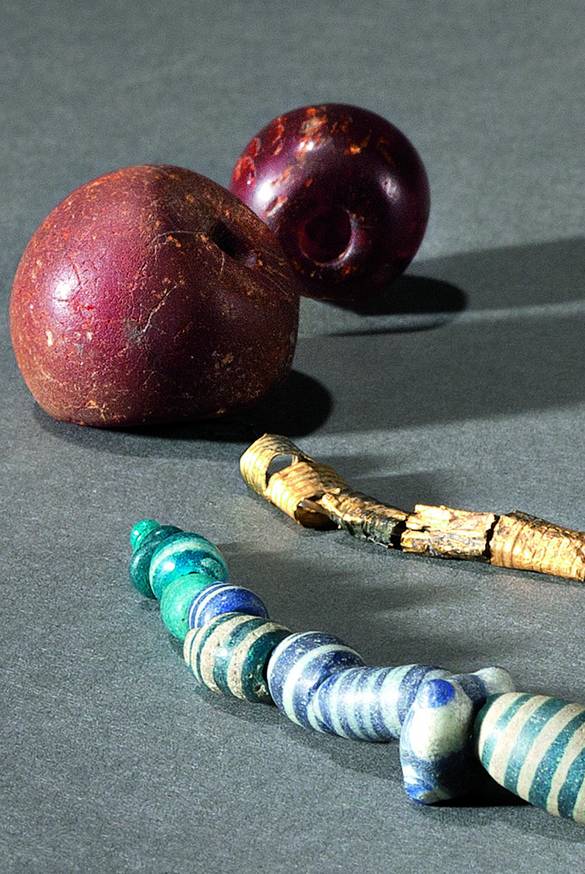
5. Amber, Glass and Gold Beads. Corcelettes and Mur. Bronze Age, between 1,000 and 800 B.C.
Bronze Age (2,200 - 800 B.C.)
The Bronze Age was marked by stunning improvements in metalworking. There was also an increase in exchanges and trade. Tin was imported, as alloying it with copper was essential for manufacturing bronze. At that time a hierarchical society was created, with marks of prestige such as bronze swords and horses and their harnesses.
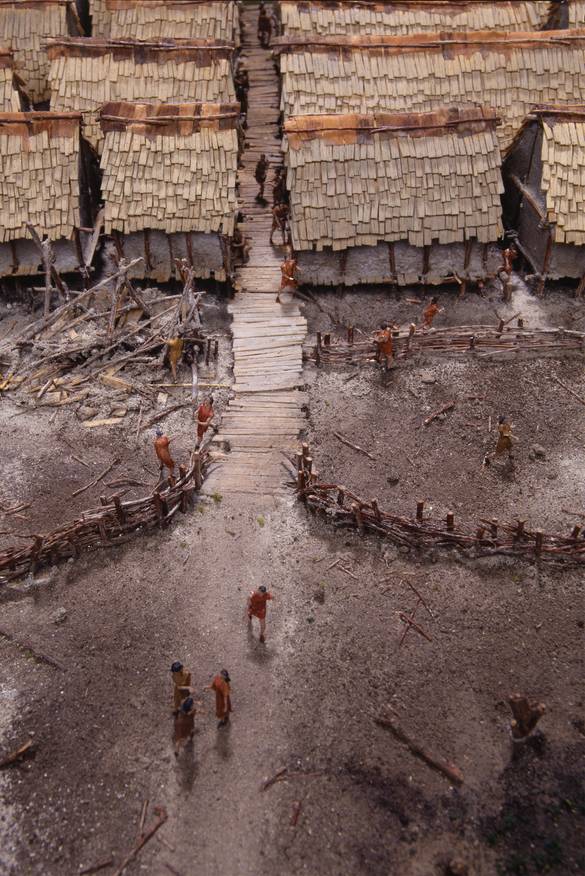
6. Model of a Lakeside Village (detail). Concise, 1,635 B.C.
As well as lakeside villages, which were periodically rebuilt, dwelling areas were developed on the plains and also at higher altitudes, with the latter designed for defence: they indicate a denser occupation of the territory or even competition between communities.
Burial practices changed: burials were simple in the early Bronze Age and later they were made under tumuli (mounds of earth). In the late Bronze Age, incineration came into general use. Recreations and models illustrate this, especially those of tombs that were recently excavated in the Lausanne region.
- Photo Credits: 1,4,6 : Fibbi-Aeppli © MCAH - 2,3,5 : Yves André © MCAH
- Models : Hugo Lienhard
